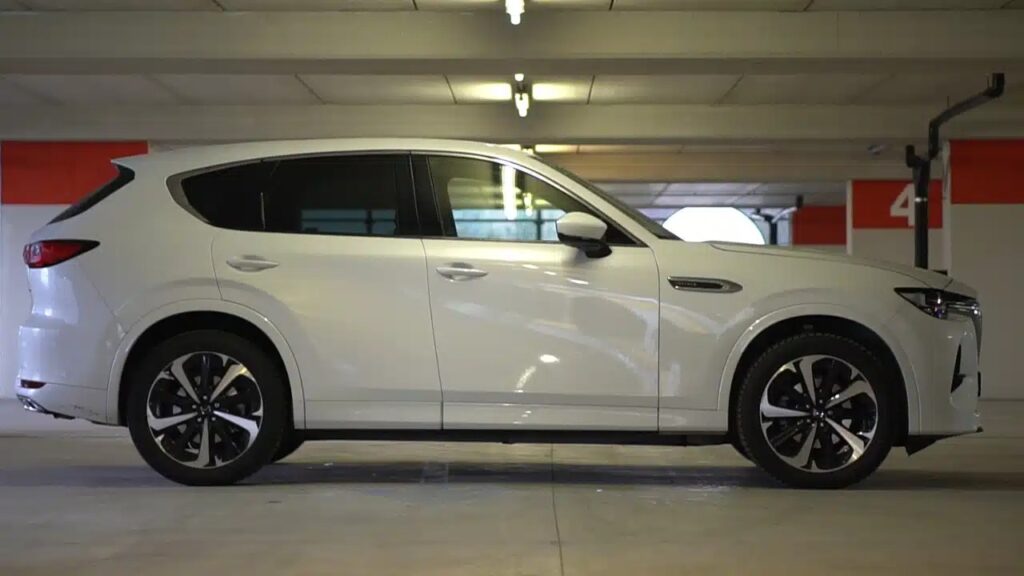Mazda has always been very careful for safety and ergonomics. As a result, the CX-60 is a perfect example of how Mazda has managed to combine clean design, high technology and comfort in one package. The cabin of the CX-60 has a clean, minimalist design. Information control and climate control are kept to a minimum and are easily recognizable. However, physical control, necessary for ensuring greater safety while driving, has not completely disappeared. Indeed, except for CarPlay and Android Auto (also available in wireless mode), which allows the use of touch, all other controls must be controlled only through the physical controls connected to the steering wheel and in the central tunnel. The use of the touch screen is however allowed when the machine is completely switched off. Let’s get to know better inside 5 Things to Know and let’s talk about infotainment and its ADAS.
The CX-60 introduces a 12.3-inch digital instrument cluster. This offers a range of information and customization, including graphics for ADAS activated systems. Additionally, the Heads Up Display projection on the windshield is large and clearly visible day and night, displaying all driving information, including navigation directions. The infotainment system also has a 12.3-inch screen.
However, the layout of the software remains unchanged compared to other cars of the brand, retaining a central knob that easily refers to the various functions of the system, such as Media or Navigation. The CX-60 offers a large interior space, making it comfortable even for tall people. Rear seat access is excellent and there is more than enough space for five people. The central tunnel has a slight rise that does not cause discomfort. Additionally, the cabinet is equipped with 12-volt, USB Type-C sockets and a wireless charging pad.
The Mazda CX-60 is equipped with the latest driver assistance systems (ADAS), including facial recognition technology. This feature, called Face Recognition, recognizes the driver and automatically adjusts the seats and mirrors to ensure a better driving experience. Similar to the facial recognition of today’s smartphones, the car can store and recall up to 250 individual driver settings, such as seat position, audio preferences and climate controls. By entering the height just once, the system calculates the optimal driving position.

Additionally, the CX-60 features a new 360-degree view that uses four cameras to give you full control of your surroundings, making low-speed driving and parking safer and easier. There is also the new Intelligent Automatic Braking System (SBS), an advanced safety device that assists the driver in the event of distraction or loss of control, helping to prevent accidents by warning of potential impacts or reducing the severity of impacts. Adaptive Cruise Control (i-ACC) adjusts speed based on traffic signals via Mazda Radar Cruise Control (MRCC). Together with Cruising Traffic Support (CTS), these technologies reduce driver fatigue by assisting with acceleration, braking and steering while following other vehicles in traffic.
All episodes of 5 THINGS TO KNOW ABOUT THE MAZDA CX-60
Motorionline.com has been selected by the new Google News service, if you want to be constantly updated about our news
Follow us here

























